GitHub Actions
GitHub Actions Core Concepts
Using if expression in Jobs
In GitHub Actions workflows, expressions let you read context variables and apply conditional logic to control job execution. This article shows how to use if expressions with context variables to run jobs only when certain conditions are met—such as deploying only on the main branch.
Understanding Context Variables
During a workflow run, GitHub provides a set of context variables. Here’s a sample dump of some available variables:
{
"token": "****",
"job": "dump_contexts_to_log",
"ref": "refs/heads/main",
"sha": "ab3cb9cc32c801545e48e279bad3cf8c646",
"repository": "sidd-harth-7/actions-1",
"repository_owner_id": "147390322",
"repositoryUrl": "git://github.com/sidd-harth-7/actions-1.git",
"run_id": "6492400732",
"run_number": "1",
"retention_days": "60",
"run_attempt": 1,
"artifact_cache_size_limit": "10",
"repository_visibility": "public",
"repository_self_hosted_runners_disabled": false,
"repository_id": "702448262",
"actor_id": "147390322",
"triggering_actor": "sidd-harth-7",
"head_ref": "",
"event_name": "push"
}
| Context Variable | Description | Sample Value |
|---|---|---|
github.ref | Full Git ref of the workflow event | refs/heads/main |
github.sha | Commit SHA of the current run | ab3cb9cc32c801545e48e279bad3cf8c646 |
github.repository | Owner and repository name | sidd-harth-7/actions-1 |
github.event_name | Event name that triggered the workflow | push |
Expressions in GitHub Actions support literals, operators, functions, and filters.
Note
For full details on expressions, see the GitHub Actions expressions documentation.
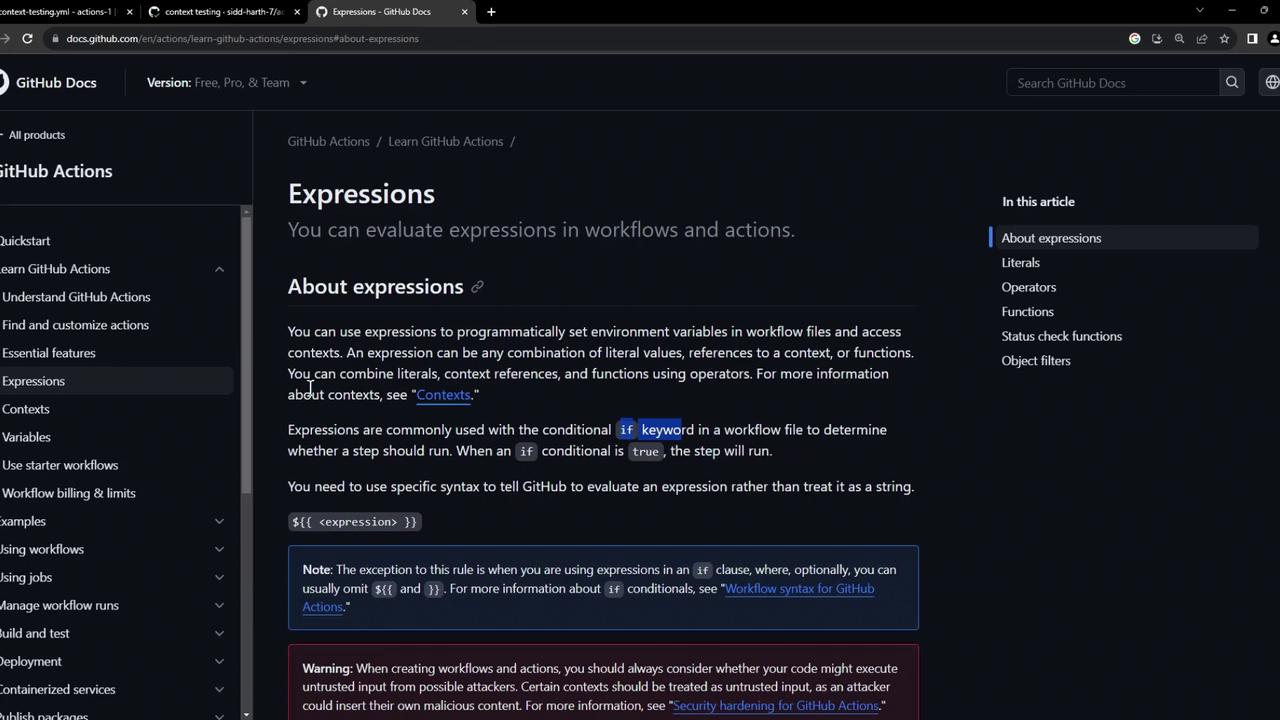
Example Workflow: Build and Deploy
Below is a basic workflow that builds and publishes a Docker image on every push or manual dispatch, then deploys it:
name: Build and Deploy
on:
push:
workflow_dispatch:
env:
CONTAINER_REGISTRY: docker.io
IMAGE_NAME: github-actions-nginx
jobs:
docker:
runs-on: ubuntu-latest
steps:
- name: Docker Build
run: |
docker build \
-t ${{ env.CONTAINER_REGISTRY }}/${{ vars.DOCKER_USERNAME }}/${{ IMAGE_NAME }}:latest .
- name: Docker Login
run: |
docker login \
--username ${{ vars.DOCKER_USERNAME }} \
--password ${{ secrets.DOCKER_PASSWORD }}
- name: Docker Publish
run: |
docker push \
${{ env.CONTAINER_REGISTRY }}/${{ vars.DOCKER_USERNAME }}/${{ IMAGE_NAME }}:latest
deploy:
needs: docker
runs-on: ubuntu-latest
steps:
- name: Docker Run
timeout-minutes: 1
run: |
docker run -d -p 8080:80 \
${{ env.CONTAINER_REGISTRY }}/${{ vars.DOCKER_USERNAME }}/${{ IMAGE_NAME }}:latest
sleep 600
Adding a Conditional if Expression
To ensure the deploy job only runs on the main branch, add an if condition that checks github.ref:
jobs:
deploy:
if: github.ref == 'refs/heads/main'
needs: docker
concurrency:
group: production-deployment
cancel-in-progress: false
runs-on: ubuntu-latest
steps:
- name: Docker Run
timeout-minutes: 1
run: |
docker run -d -p 8080:80 \
${{ env.CONTAINER_REGISTRY }}/${{ vars.DOCKER_USERNAME }}/${{ IMAGE_NAME }}:latest
sleep 600
Here, github.ref holds the full reference (e.g., refs/heads/main). If the condition is false, the deploy job is skipped.
Viewing Skipped Jobs for Feature Branches
When you push to a feature branch, the Docker build and publish steps run, but the deploy job is marked as skipped:
Note
Check the Actions tab in your repository to see which jobs succeeded or were skipped.
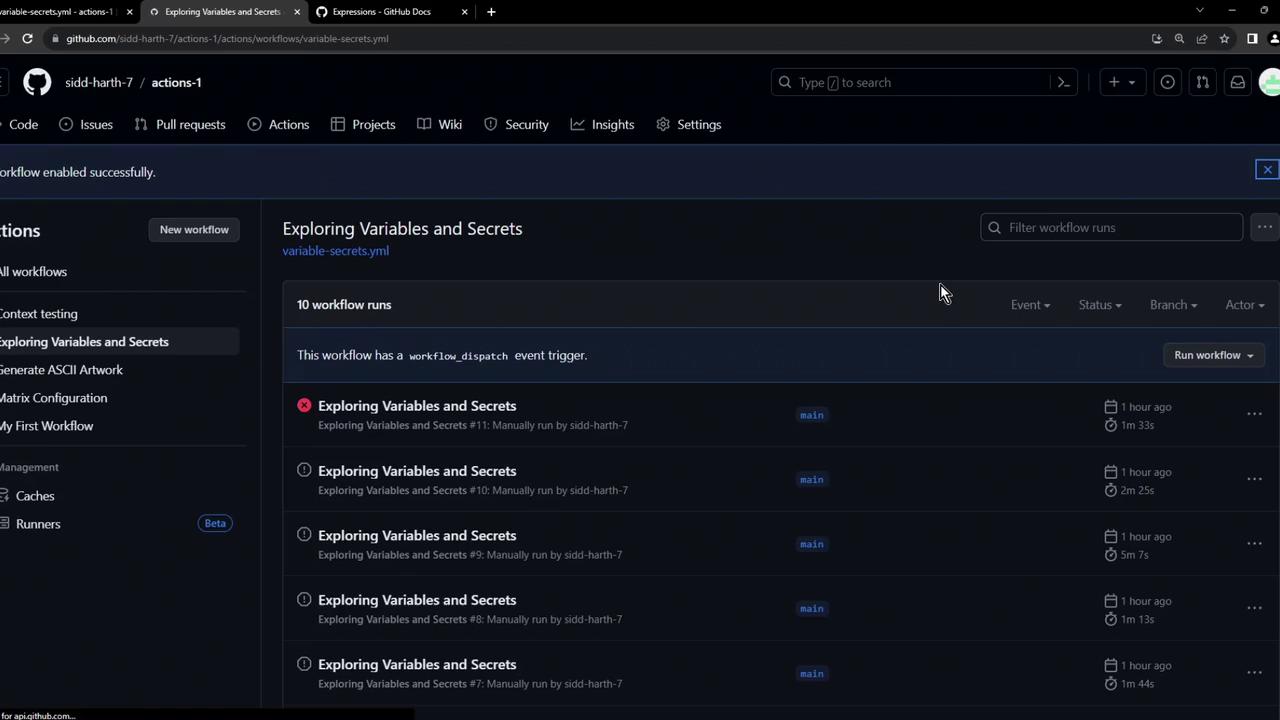
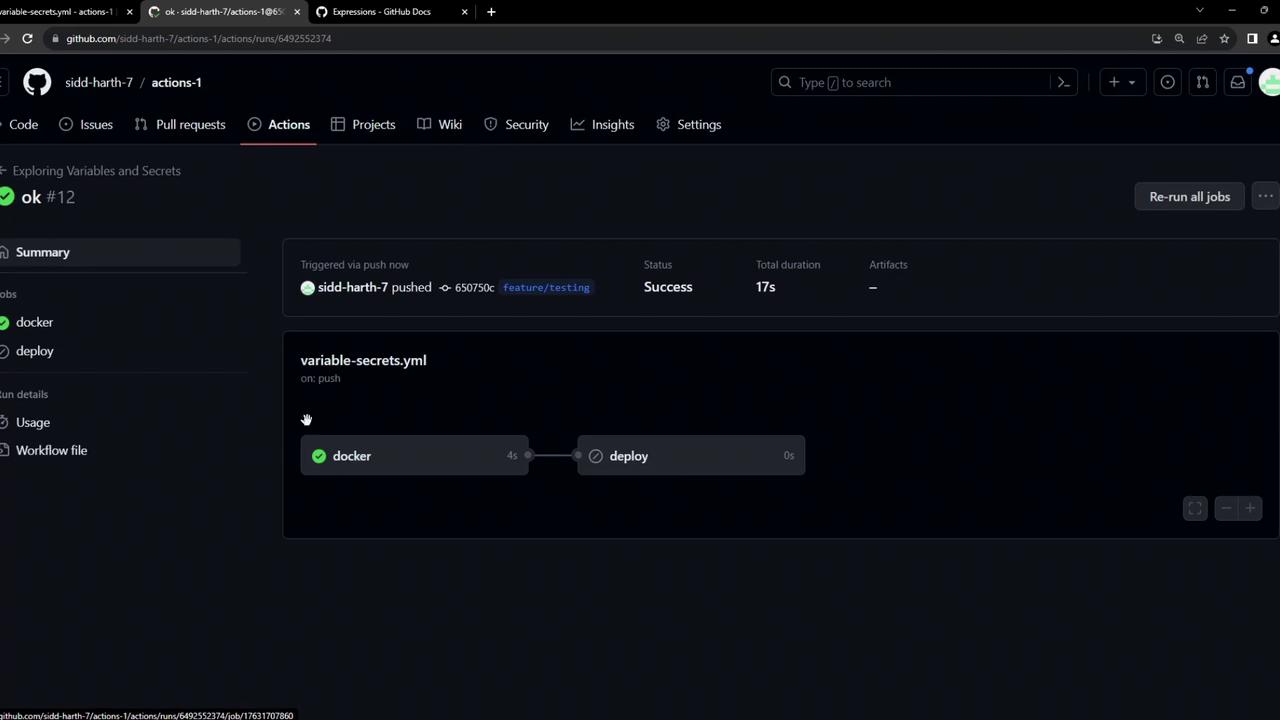
Merging into main to Trigger Deployment
- Create a pull request from your feature branch into
main. - After merging and approval, the PR page shows all checks passing.
- Once merged, delete the branch if desired.
Note
Pull request details display commit statuses, merge confirmation, and branch deletion options.

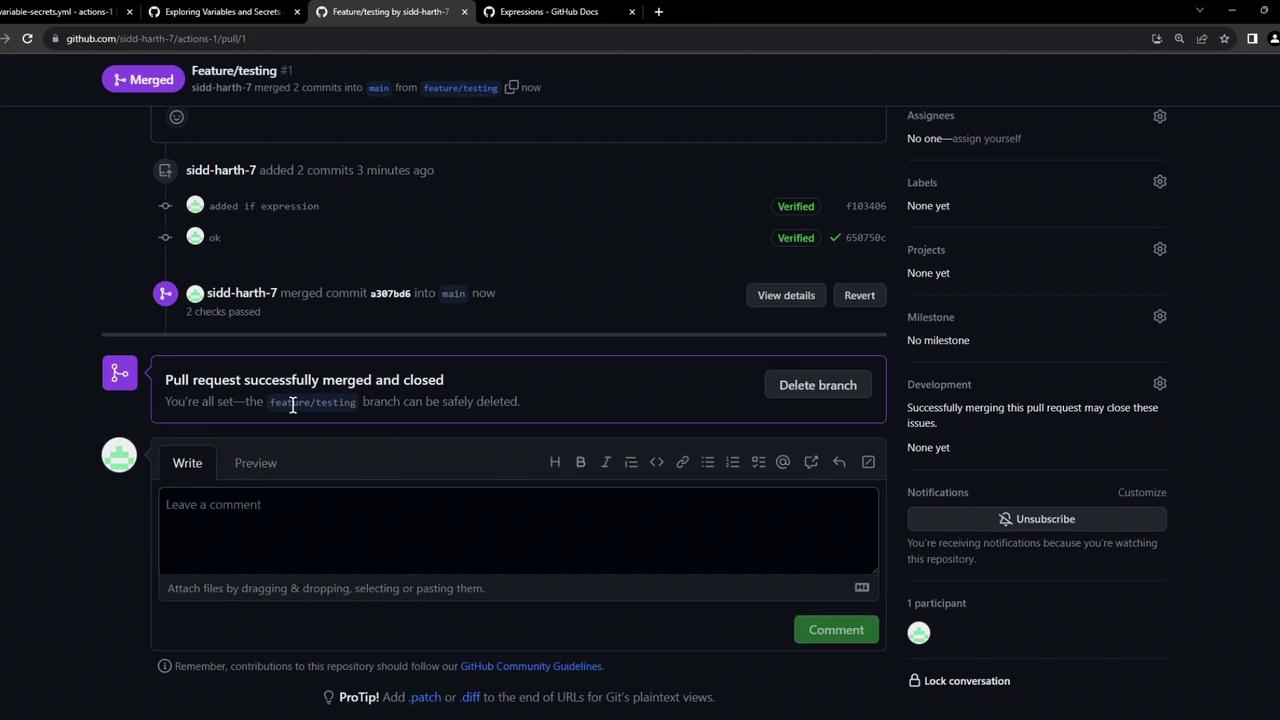
After the merge, a new workflow run on main starts—both the docker and deploy jobs execute:
Note
Monitor the Actions tab to confirm that the deploy job ran successfully.
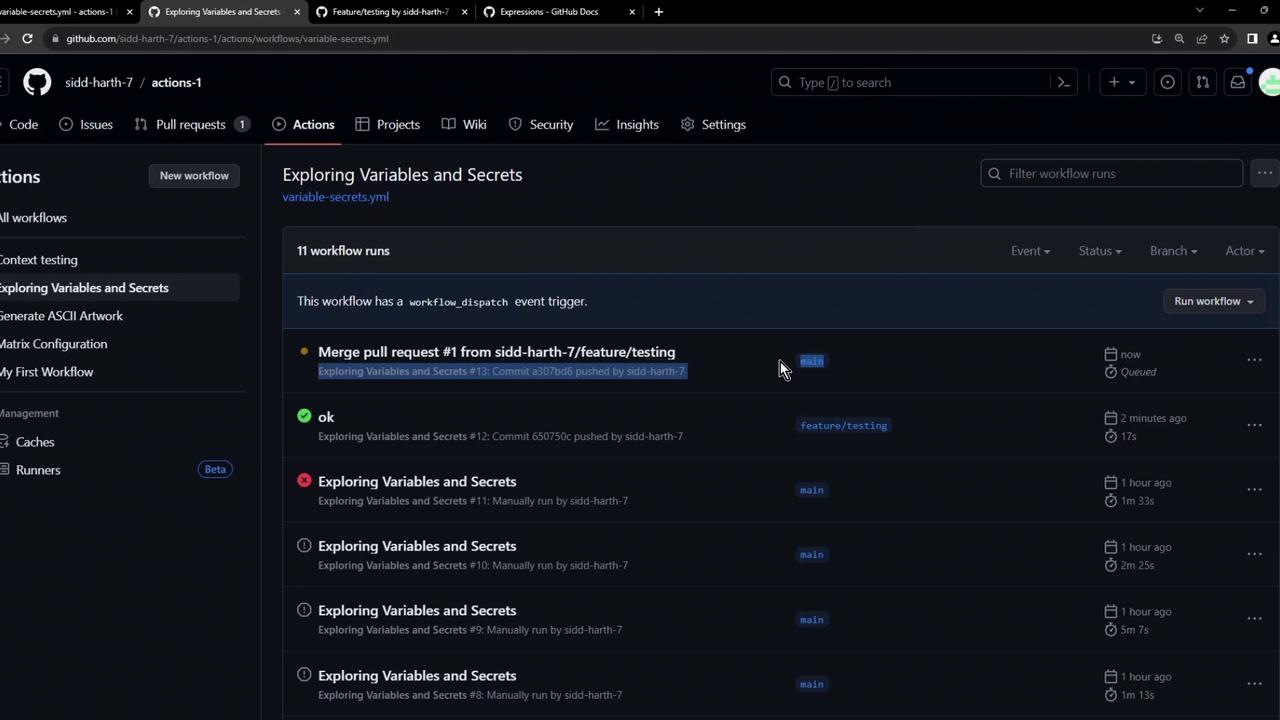
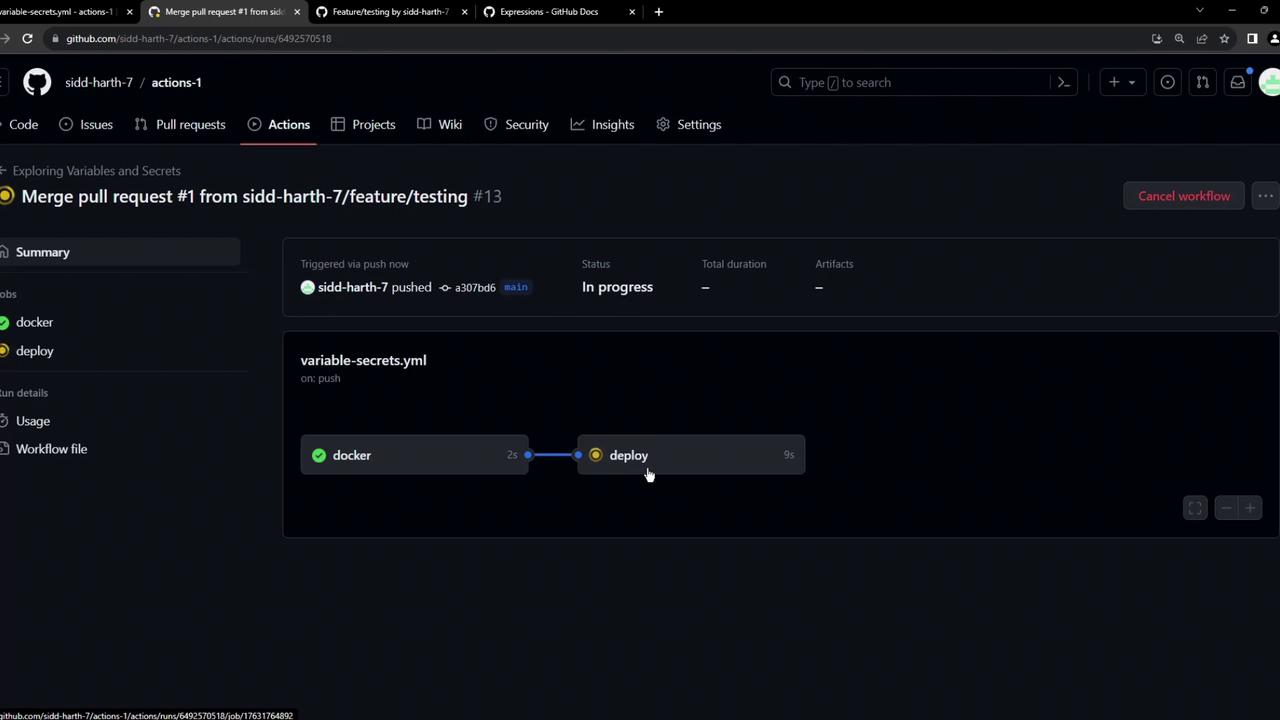
Summary
Using if expressions with context variables like github.ref lets you implement branch-specific logic in your workflows. This approach ensures deployments occur only when code reaches the intended branch, enhancing control and security in your CI/CD pipeline.
Links and References
Watch Video
Watch video content